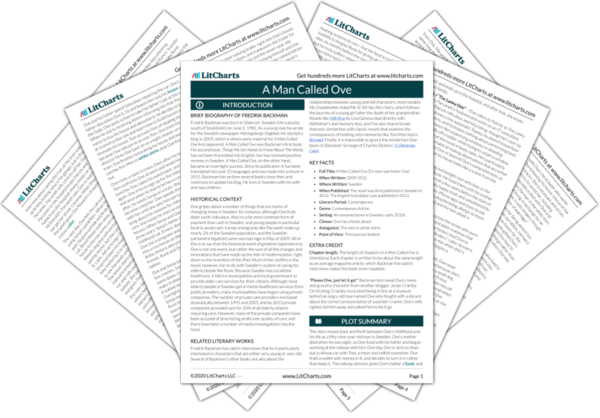Ove learns from this man in the white shirt that rules for rules' sake are more important than doing things that actually help people. This, combined with Ove's realization that his insurance agent wasn't an agent at all, explains Ove's deep distrust of government entities and people trying to sell him things. They took away the one thing he loved at this point when they couldn't save, and then couldn't rebuild, his house.
